Resources
Sewage Pollution in Westchester
Fecal Bacteria Monitoring
10-10-2020 Stream Walk Results (PDF)
Partner Pages
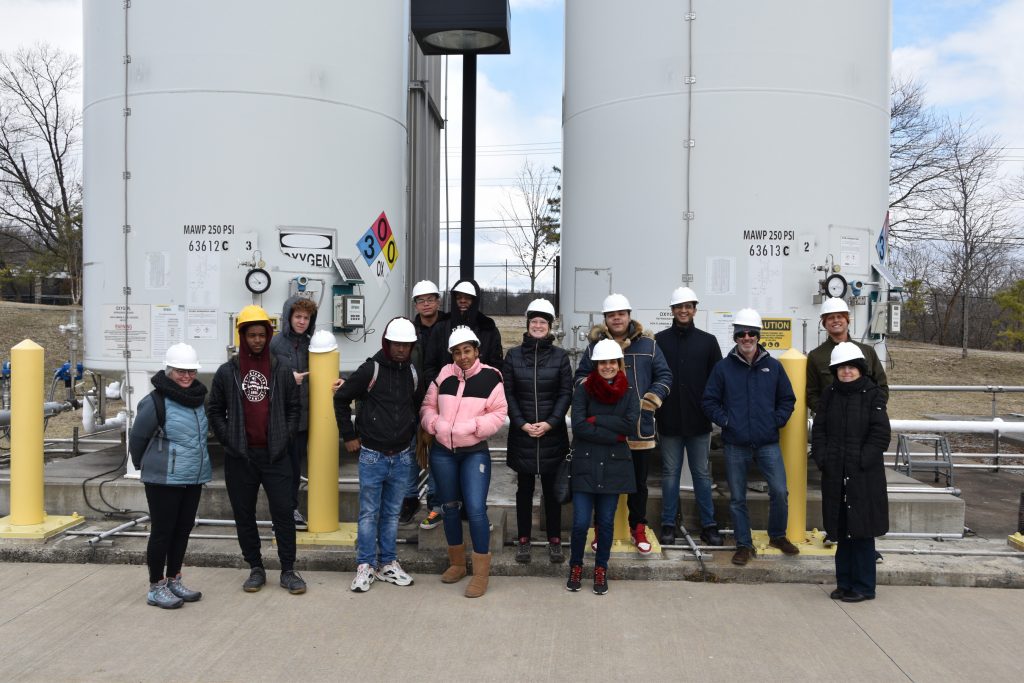
In 2019, Save the Sound began a partnership with the Environmental Club at the Boys & Girls Club of Mount Vernon to address water pollution issues in their community, especially the ongoing sewage discharges into the Hutchinson River from old and leaking city sewer lines. Since then, Save the Sound staff has led activities with the students focusing on legislative advocacy, water quality monitoring, sewage treatment and infrastructure, and the impact sewage pollution has on Mount Vernon’s waterways.
Hutchinson River Stream Walk – October 2020
On October 10th, 2020, Save the Sound and the Boys & Girls Club of Mount Vernon set out on their first Hutchinson River stream walk. Data collected can be separated into two discrete categories: abiotic measurements are field measurements that involve non-living data like oxygen concentration, temperature, and pH while biotic measurements are field measurements that involve living data like fecal bacteria.
Abiotic measurements were collected at predetermined points along the Hutchinson River by each of the groups. A YSI probe is an electronic device that can be placed in the water to collect some of the abiotic measurements, and was used to collect data on temperature, dissolved oxygen, and water conductivity. An opaque water collection bottle was used to analyze biological oxygen demand at three points along the route. Biological oxygen demand (BOD5) is defined as the amount of oxygen consumed by bacteria and other microorganisms in a specific volume of water. A BOD5 of 5mg/L or above suggests some type of sewage or treated effluent pollution in a waterbody. The data collected suggests there is a moderate amount of sewage and/or treated effluent in the Hutchinson River. The data can viewed below:
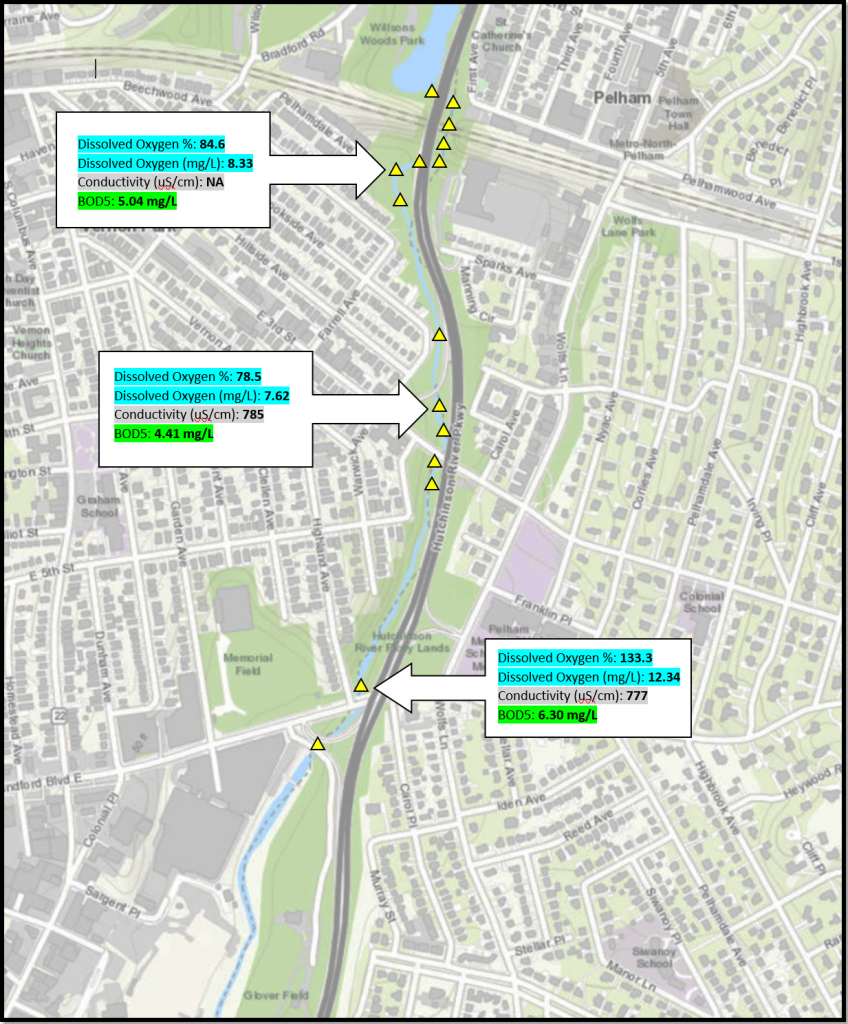
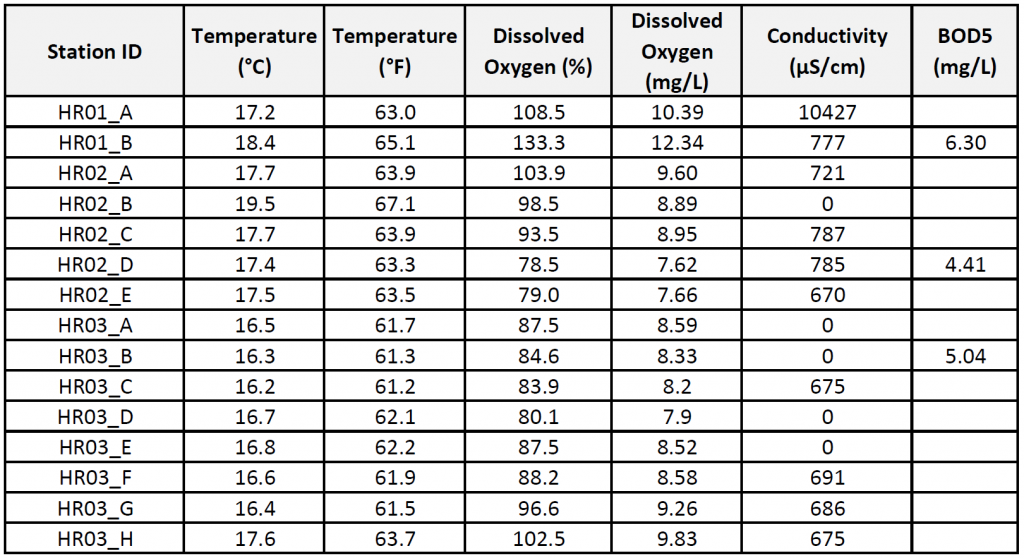
In terms of biotic measurements, students collected data on fecal bacteria counts at outfalls along the river. Monitoring for Enterococcus bacteria, its presence in waterways suggests that raw sewage is making its way into the environment. As described on the Fecal Bacteria Monitoring Page, Enterococcus counts greater than 104 MPN/100mL fail the safe swim criteria. All but one of the samples shows that Hutchinson River fails the safe swim criteria, usually failing by 10x or greater. Collecting this data is important because it can help identify exactly where sewage infrastructure needs repairing. Students can take this data to City Hall to advocate for improvements to water infrastructure in the City of Mount Vernon. The Water Reporter mobile application, developed by Chesapeake Commons, was used to collect images and location data on each of the outfalls sampled and can be viewed below:
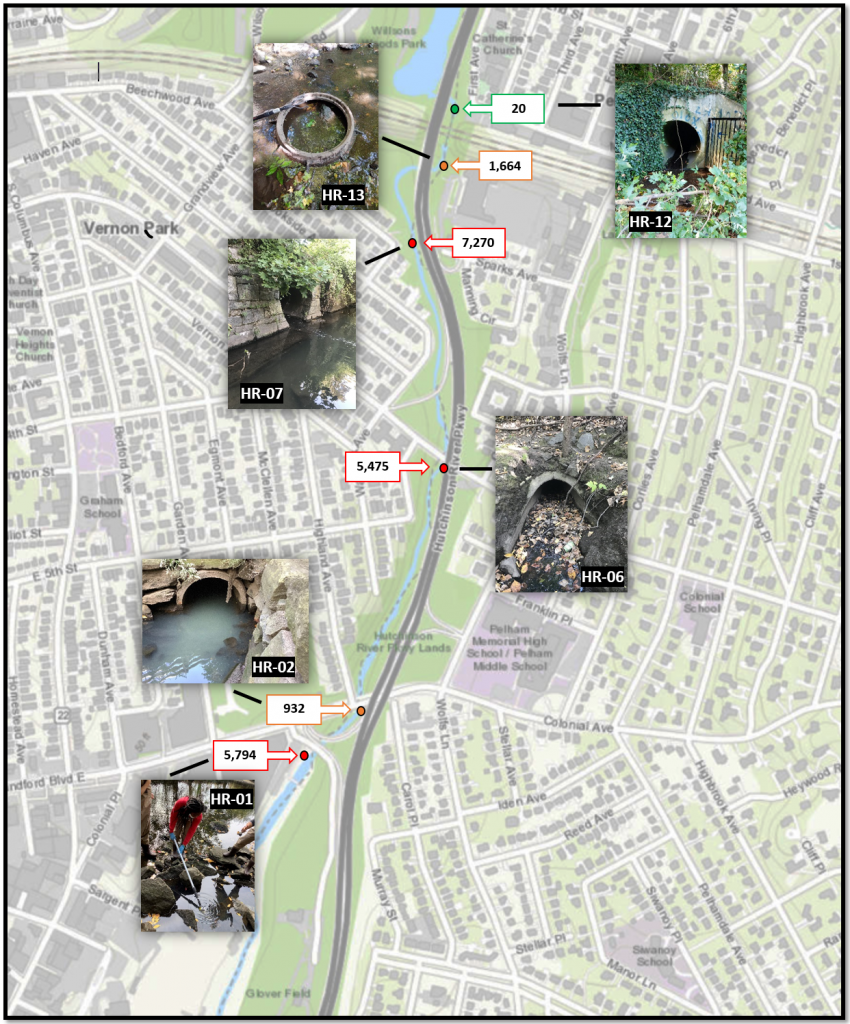
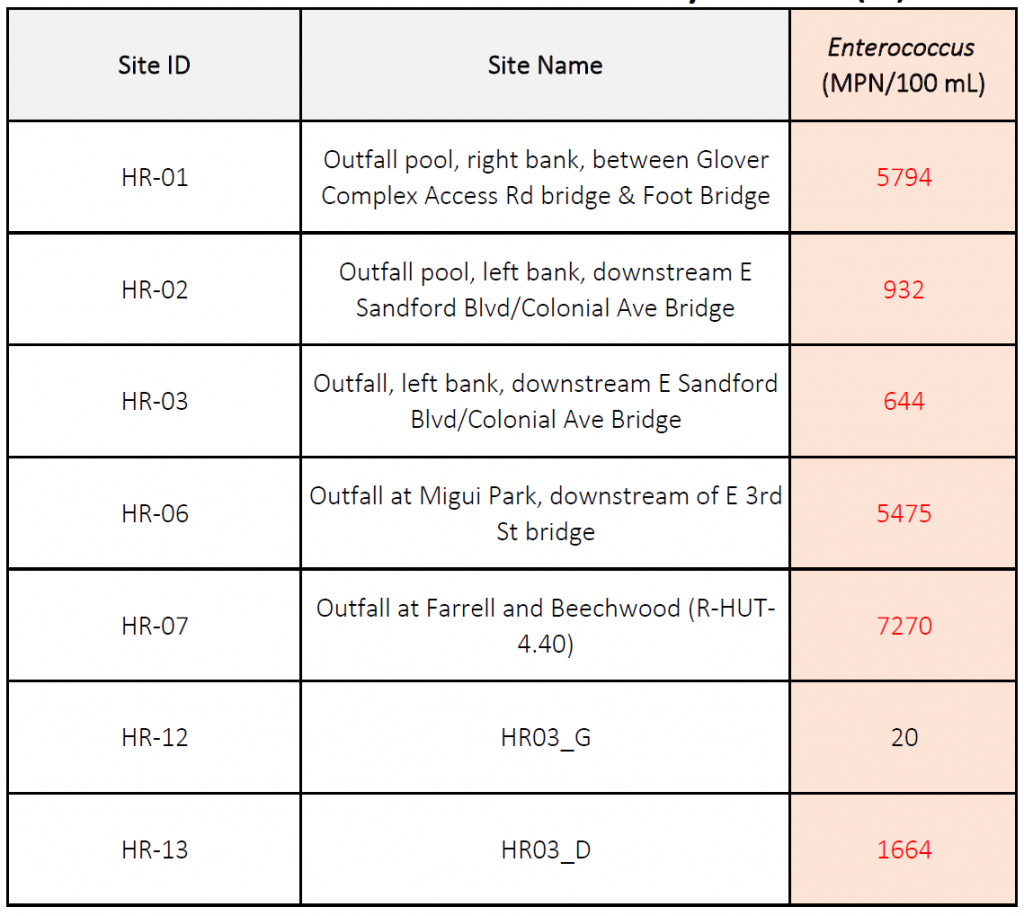
Future outings will involve similar data collection methods, allowing for comparisons to be drawn over time in order to monitor changes in water quality parameters and fecal bacteria counts. Check in regularly for updates.
